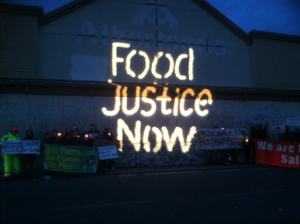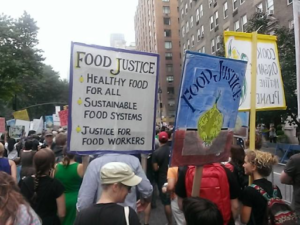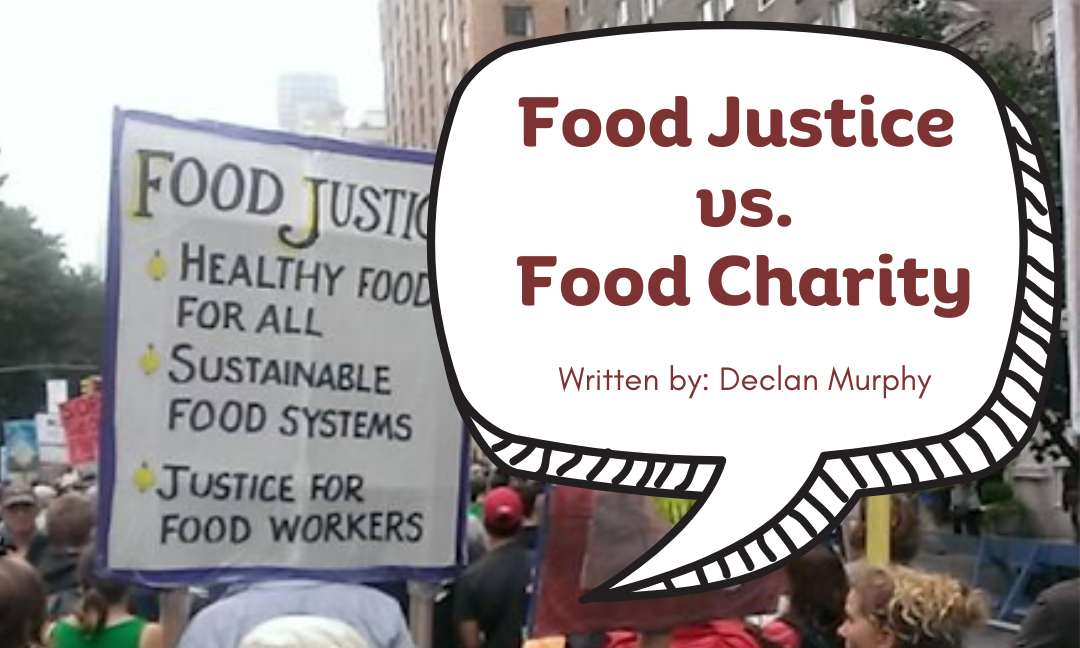Written by Declan Murphy
Edited by Koneenika Datta
Designed by Kiya
Published by Kiya
As the winter arrives, heating costs and other demands bring with it special challenges for food insecure households. In the fall and winter, largely due to the Thanksgiving and Christmas holidays, many schools and families participate in food drives to help their local communities through food banks, and you are encouraged to give generously if you can. This year, things will be especially hard for families struggling under inflation. However, this post is asking whether we can do better than food charity, and what are some things we can do to increase food justice, instead.

I certainly don’t mean to downplay the importance of food charity, as it plays an important role in the health of our communities, and food banks do excellent work. However, food charity is not as permanent as creating food justice would be in protecting the people around us from food insecurity and we should work towards both diligently.
Food charity is basically the idea that we (as a society) can redistribute resources through the generous acts of individuals, organizations and businesses who donate food and money to help feed the hungry. Food charity depends on the willingness of people to donate, and also requires volunteers to distribute the food.
However, charity is not the only way to combat hunger.

Food justice is the quest to cultivate a more equitable society through ensuring that people have fair access to healthy, sufficient food, despite their income and other forms of marginalization. The food justice movement seeks to reconsider how we manage land and agriculture, how we conceptualize workers’ rights, and how we, as a society, imagine human rights and security. Food is and always has been intimately linked with justice, and injustice, and if we want a just world, we must address food insecurity and barriers to food access in meaningful, long lasting ways.
Food Tank, a non-profit that focuses on food justice, suggests seven ways in which we can work towards food justice. Many of them are huge tasks, like demanding more equitable access to land, because the inability to garden lays at the heart of people’s inability to feed themselves and places families at the mercy of commercial food markets. We should also pay attention to where grocery stores are built, and advocate for affordable public transit, to counteract the effects of food deserts, which disproportionately harm the disadvantaged. We also need to work against climate change and demand changes in the ways commercial agriculture is managed, as well as promote the right of workers (including farm workers) to earn a living wage. Fundamentally, we should work to eliminate inequalities in our society that put people at increased risk of food insecurity. These are all important, and we should support change with our money, time and votes, but there are also more immediate, less intimidating, ways that we can also work towards food justice.

The first step towards food justice is for all of us to agree:
- Everyone has the right to access healthy food; healthy food should be more available and easier to afford.
- Our food systems need to be sustainable.
- Everyone deserves a living wage, including everyone who works in the food industry.
Those of us who can garden can begin saving and sharing seeds, which can help increase family garden yields and give more people access to sustainable crops. People who are unable to garden can share knowledge about raising foods indoors. We can make more sustainable choices. We can also participate in our local school or community gardens, and work towards making them accessible for more people. We can also choose to support farmer’s markets and sustainable food retail outlets that serve places at risk of becoming food deserts. We can ask whether workers and suppliers are fair employers, and support those businesses that treat their workers fairly.
We can also apply pressure to our school boards and the province to prioritize food education amongst our children, because increased food knowledge is a key to increasing food sovereignty, and, therefore, increasing food justice for everyone. The simple act of learning to think more about what you eat, and where your food comes from, can help increase food justice. Becoming more aware of how your food habits affect the planet helps a lot. By learning more about food systems, and gaining more food knowledge, we can reduce food waste and increase our own food sovereignty, and we will be better able to foster food justice in the world.
By reading this blog (and perhaps even volunteering for it), you are helping to increase food justice! So, now, what will you do with what you have learned?
I wish you all the very best winter season, and send out a special wish for full bellies and warm hearths for everyone.
Sources:
Backbone Campaign. (2017.) Image: Food Justice Now.
Boston University Community Service Center. (n.d.) What Is Food Justice? | Community Service Center.
CIDSE. (2014.) Image: Food Justice Rally.
City of Cambridge. (n.d.) Image: Food Bank volunteer.
Food Secure Canada. (n.d.) Food Justice.
FoodTank. (2021.) Seven Ways to Fight for Food Justice.
Israel, M. (2013.) Serving Up Food Justice at School.
Murphy, D. (2023.) Building Inclusive Community Gardens.
Murphy, D. (2023.) Seed Harvesting.
Murray S, Gale F, Adams D, Dalton L. A scoping review of the conceptualizations of food justice. Public Health Nutr. 2023 Jan 22;26(4):1-27.
York University. (n.d.) Equity | Food Policy for Canada.
Ypsilanti District Library. (2021.) Kids at the Table: Food Justice – Ypsilanti District Library.

